Quantifying social interactions and behaviours of Mobula alfredi through the use of Crittercams
2018
Nicole Pelletier (MSc Marine Environmental Management - University of York)
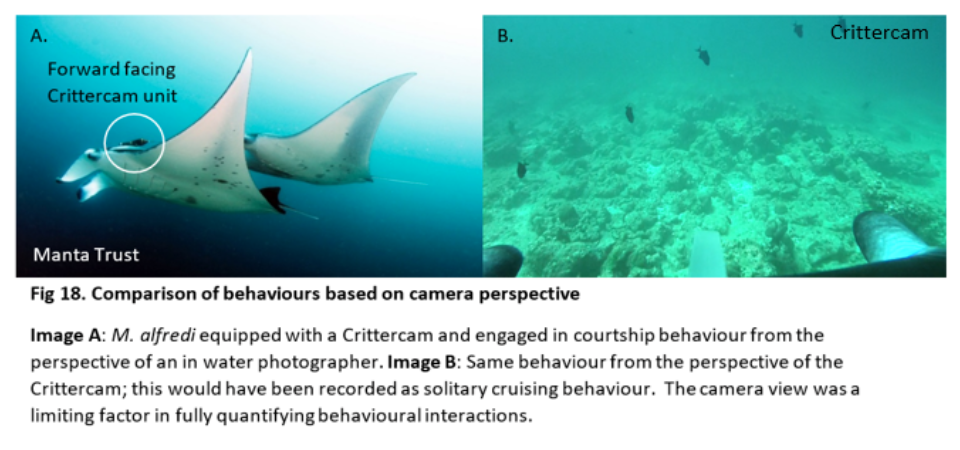
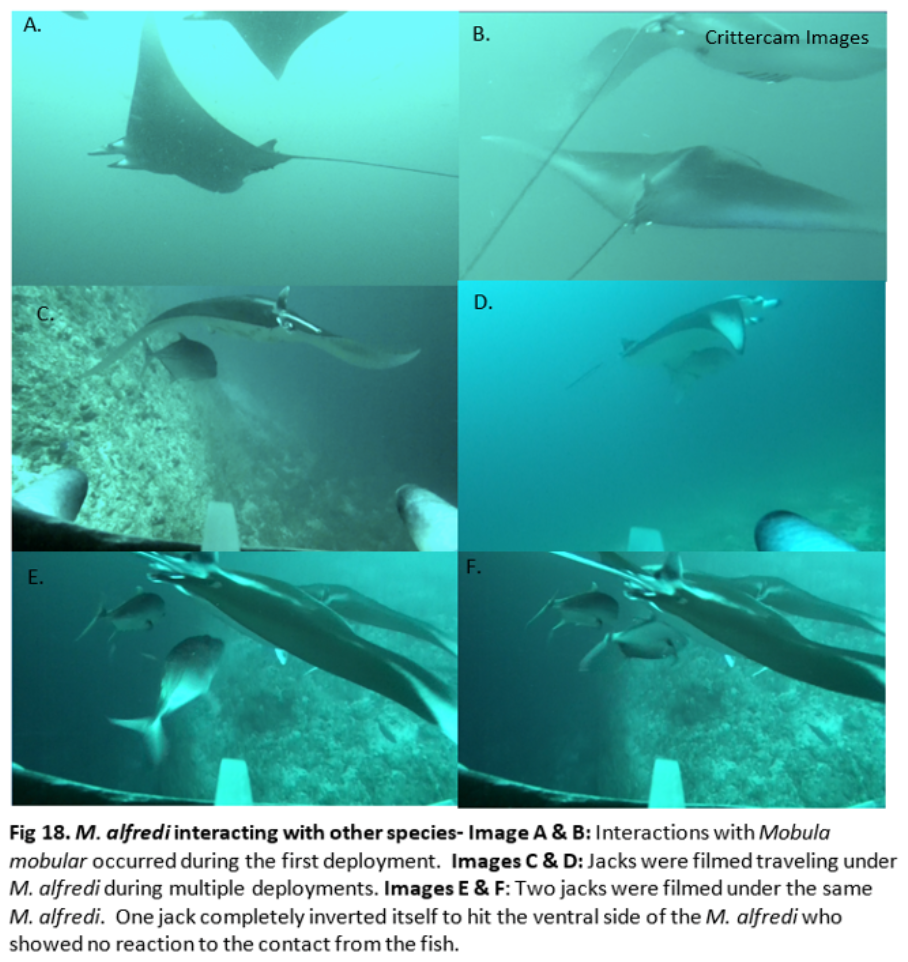
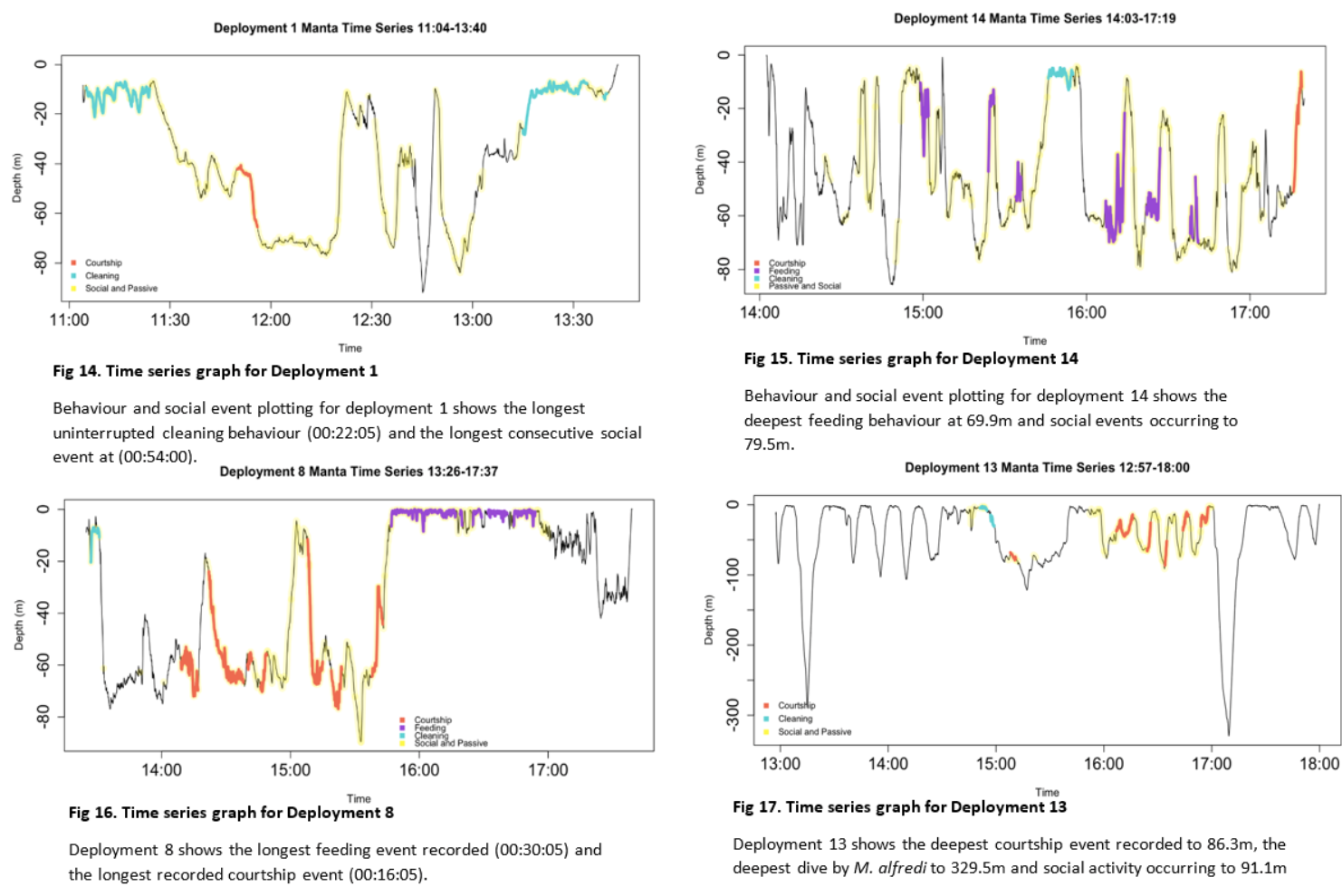
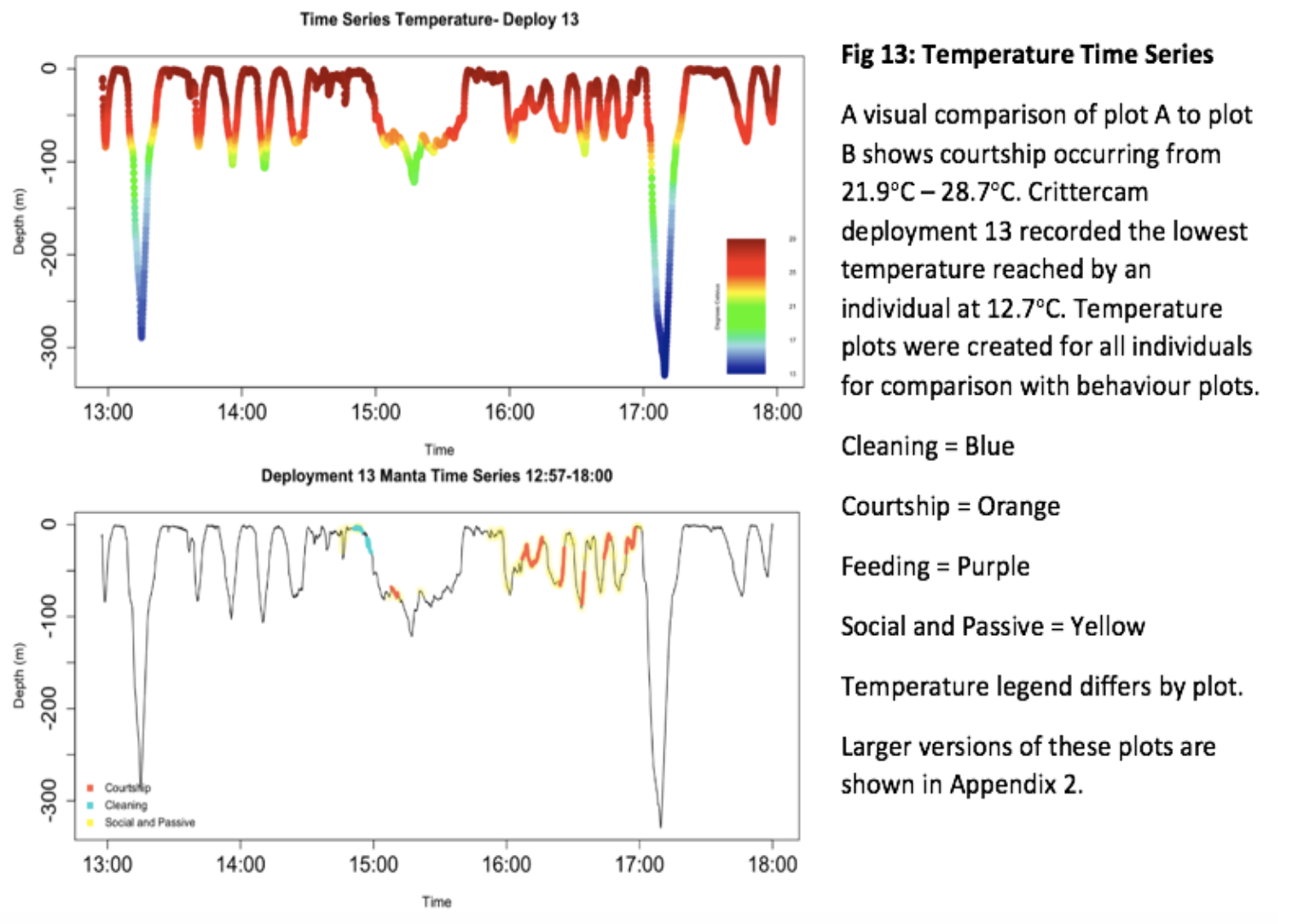
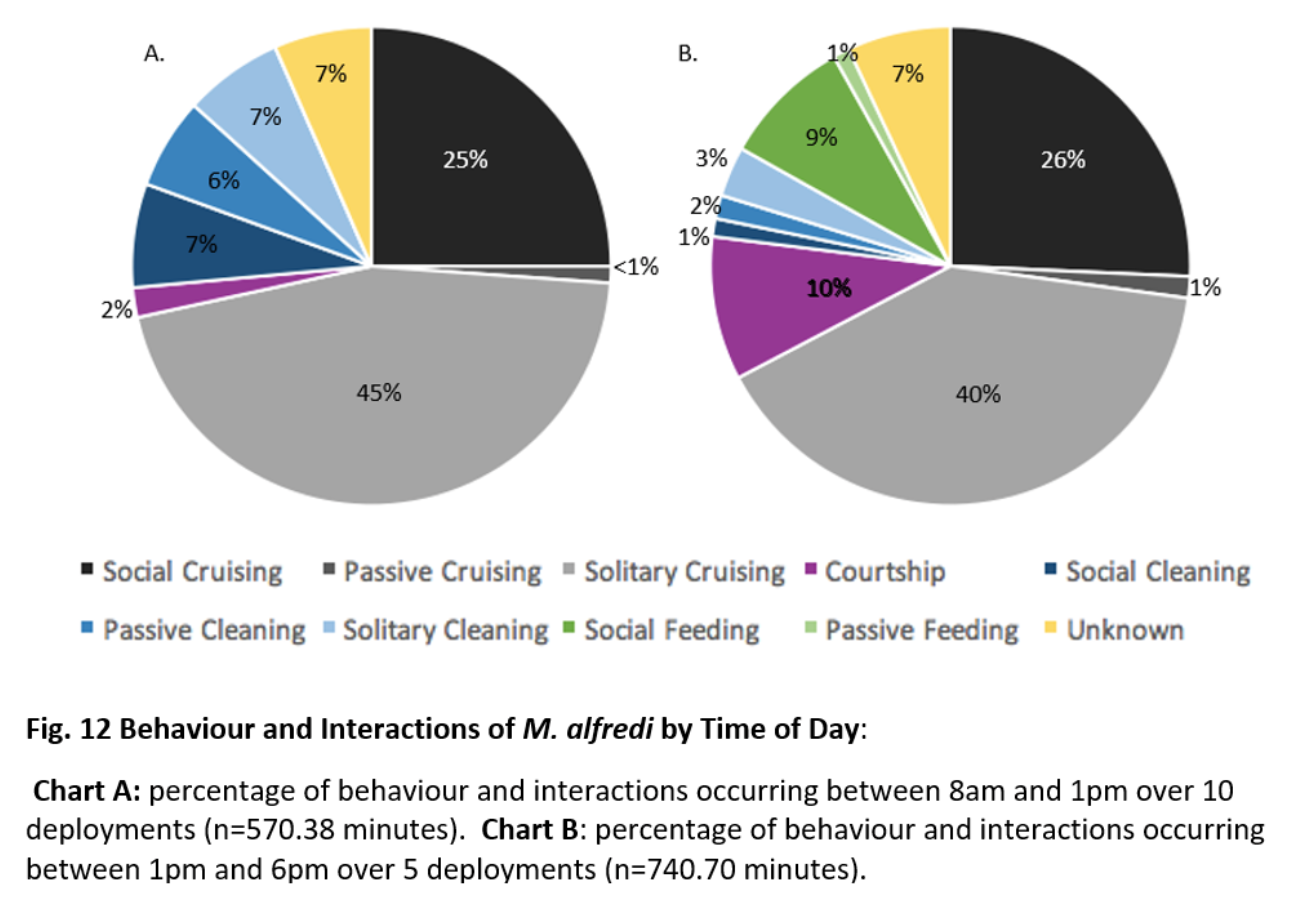
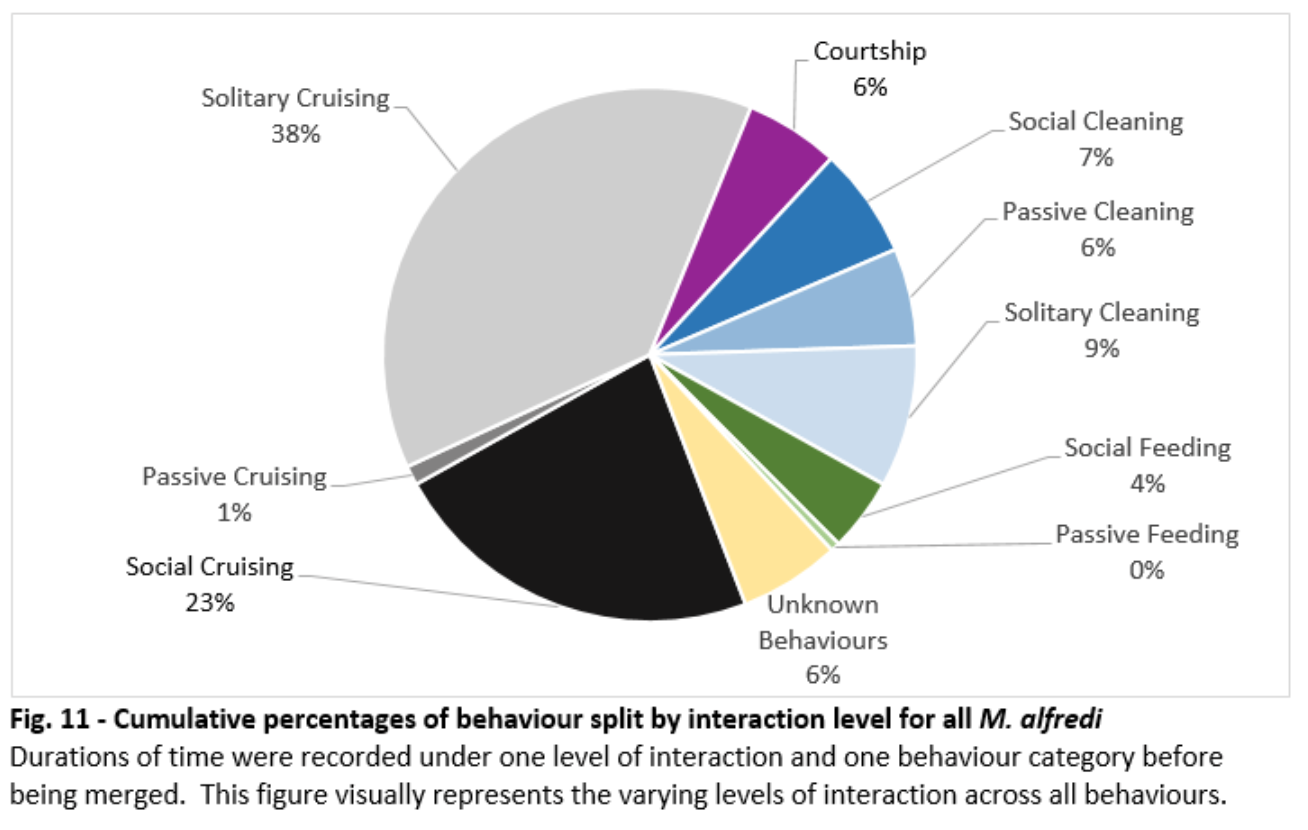

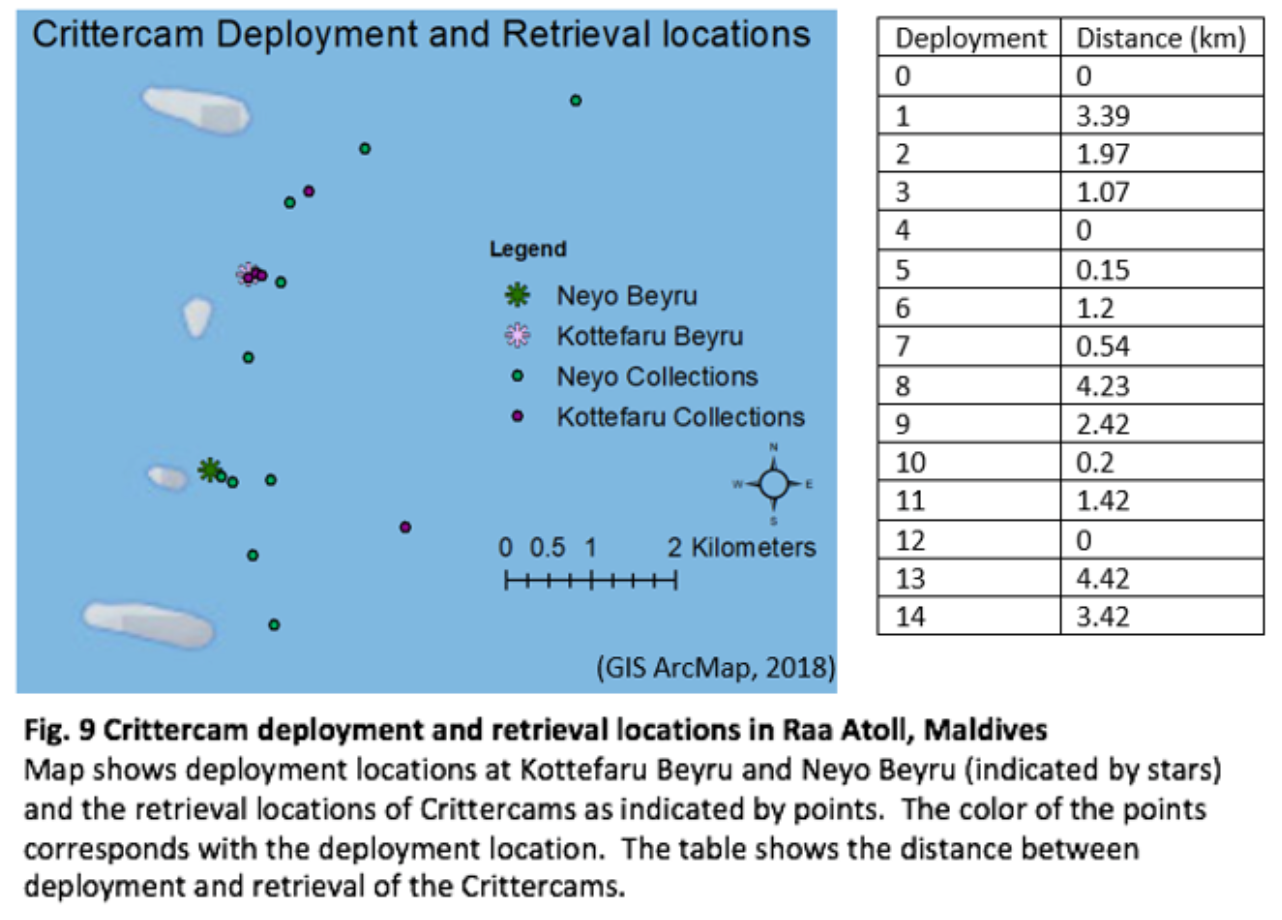
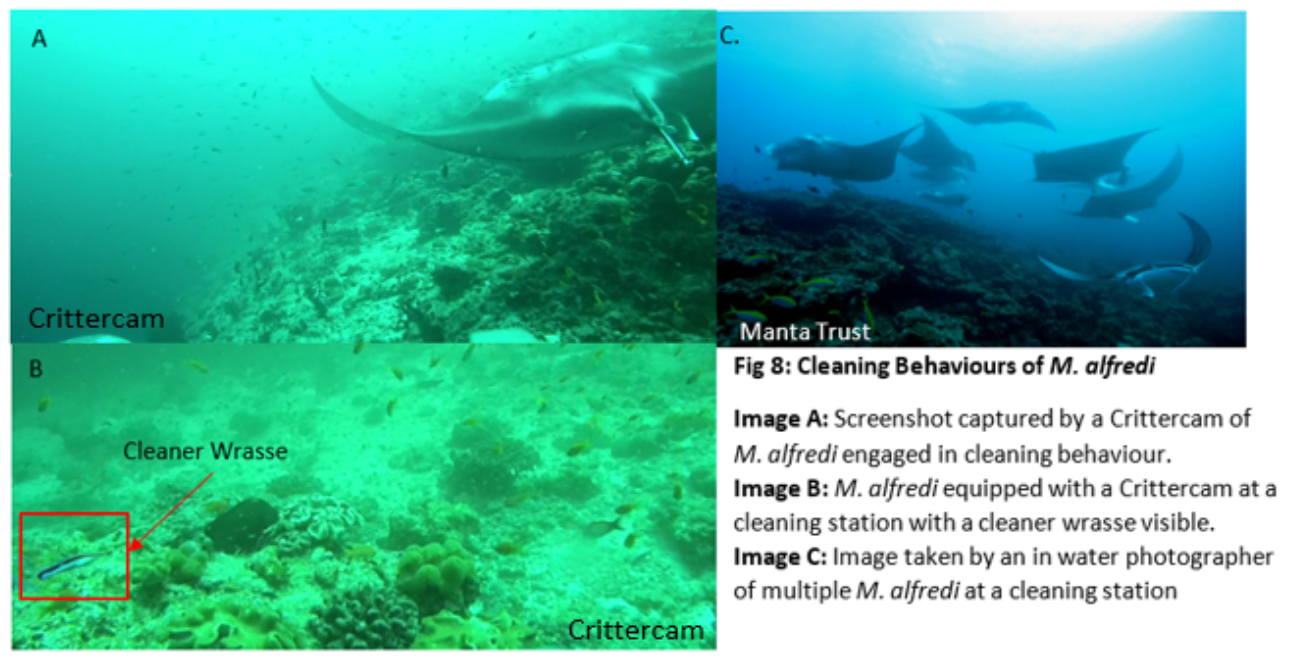
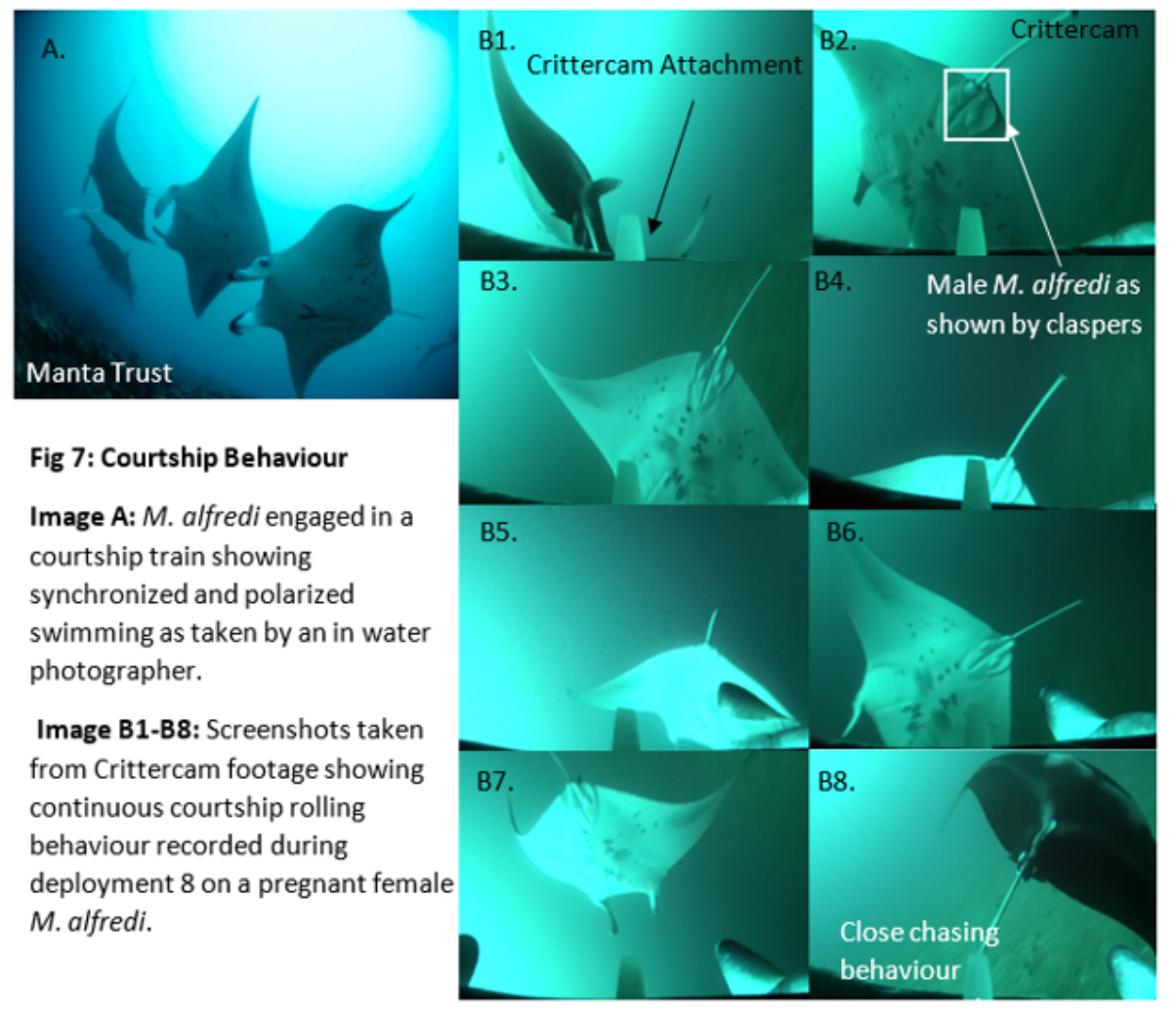

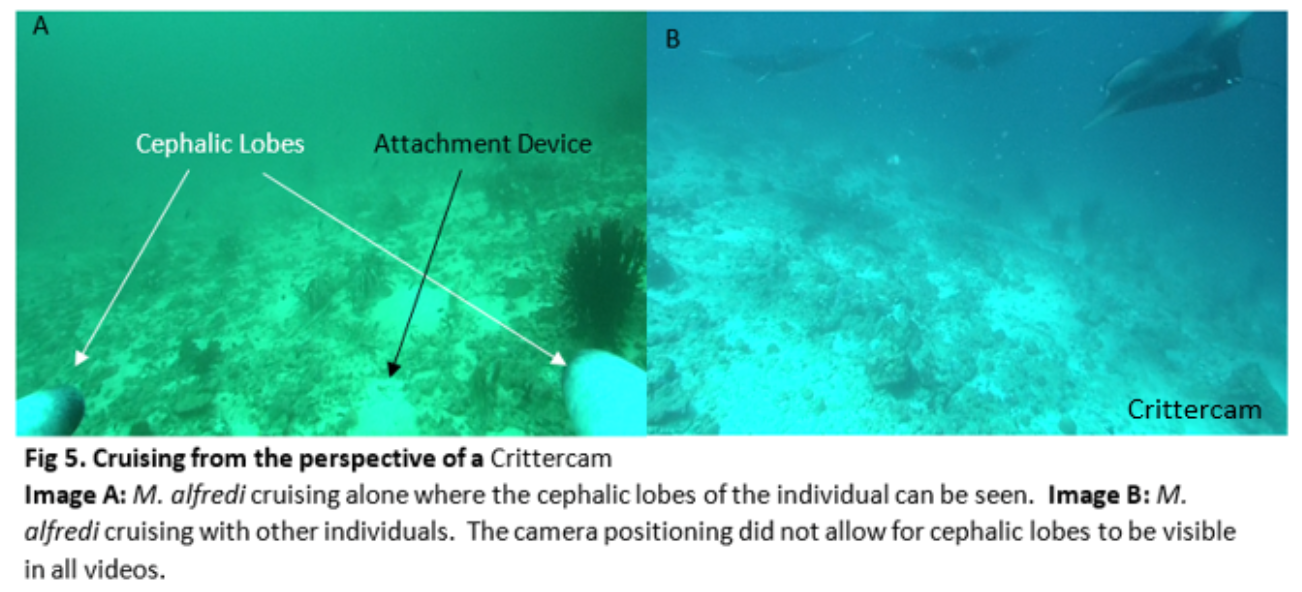
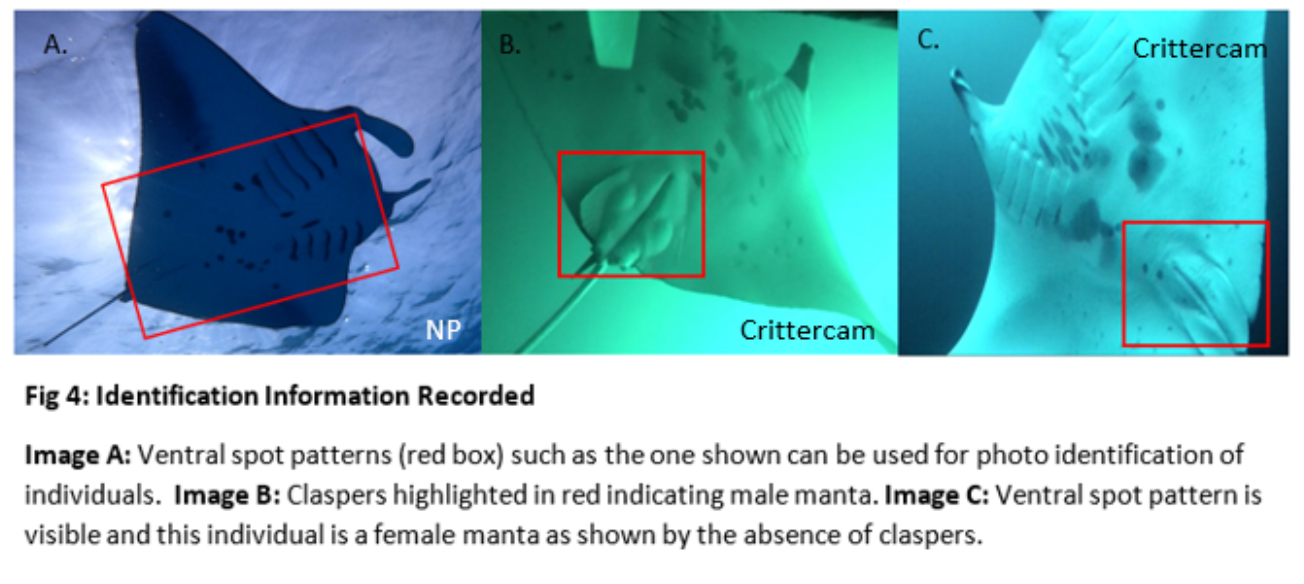
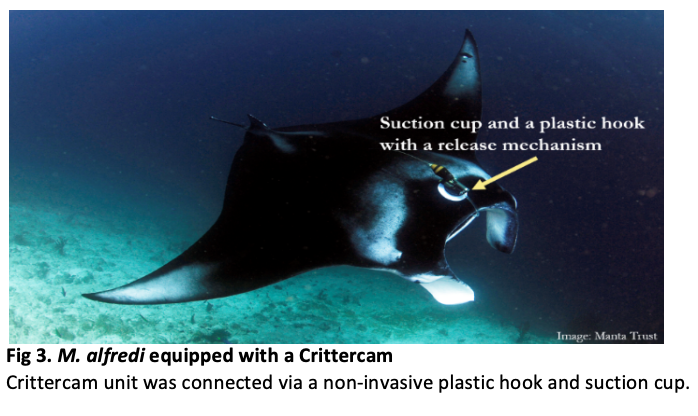
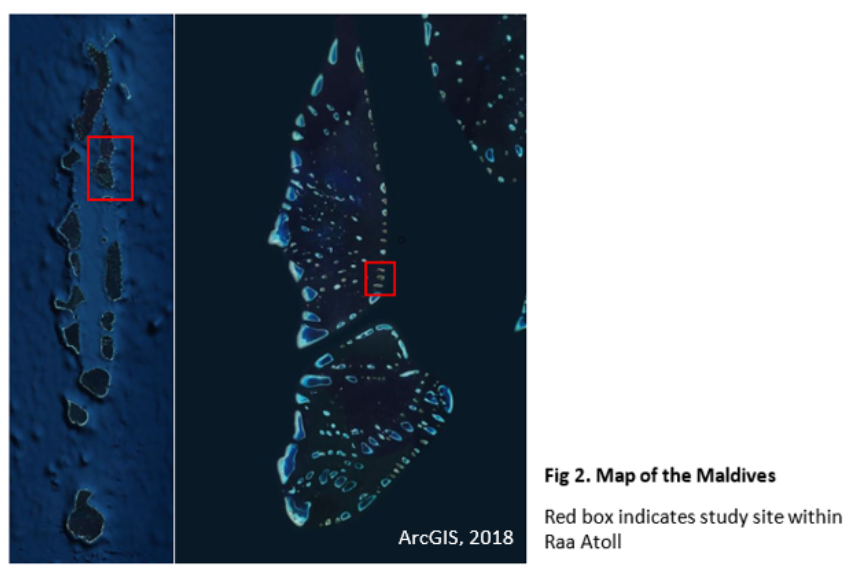
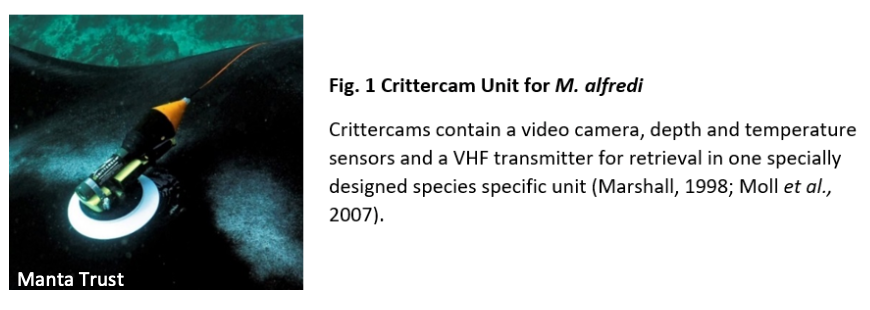
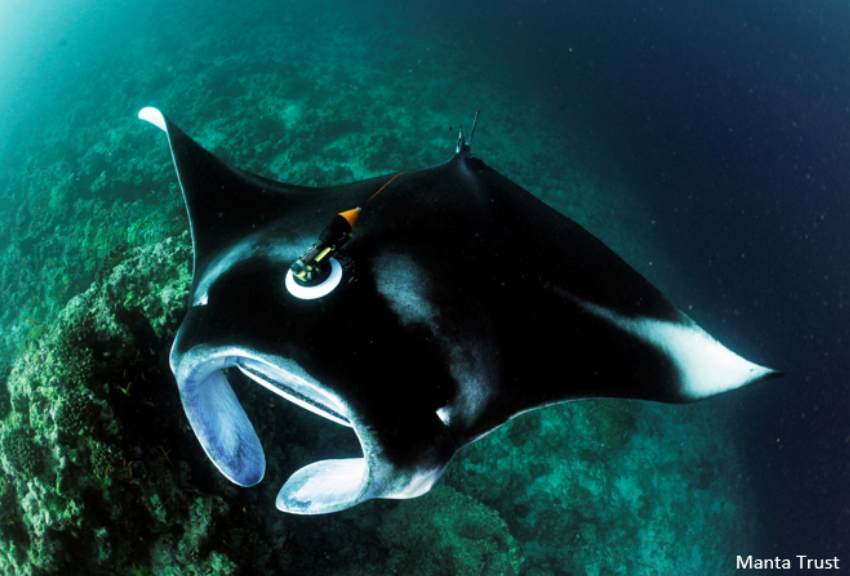
Summary: Behavioural studies conducted in the natural habitats of animals are crucial for understanding their ecological roles and habitat usage. While previous research on Mobula alfredi (reef manta rays) has utilized observational studies and animal tagging, there are still gaps in knowledge due to limitations of these methods. To address this, Crittercam technology was employed by National Geographic and Manta Trust to study M. alfredi behaviour. The Crittercams captured video footage, allowing for the quantification of behaviours, social interactions, and recordings of courtship and feeding behaviours at depths exceeding 65 meters. The technology also documented social interactions at depths surpassing 95 meters, with an individual manta ray reaching a maximum depth of 329.5 meters and a minimum temperature of 12.7°C. Interactions with Mobula mobular and Carangidae fish species were also recorded to expand understanding of the species' ecological roles within reef ecosystems. This study represents the first use of Crittercam technology for researching M. alfredi.
Abstract
“Behavioural studies on animals in their natural habitats are important to help researchers understand the full ecology and habitat usage of a species. Mobula alfredi (reef manta rays) have been researched using observational studies and animal borne tagging devices, however research gaps exist where these methods present limitations. As an innovative research tool, Crittercam technology has evolved and can now be used to document the behaviours of M. alfredi. National Geographic and Manta Trust deployed Crittercams on M. alfredi which allowed for quantification of behaviours and social interactions through observation of the video footage. Courtship and feeding behaviours were recorded beyond 65 meters depth and Crittercams additionally recorded social interactions past 95 meters. The maximum depth reached by an individual was 329.5 meters at a corresponding minimum temperature of 12.7oC. I documented interactions with Mobula mobular and Carangidae fish species to expand knowledge of species ecological roles within reef ecosystems. This study is the first time Crittercam technology has been used to research M. alfredi.”
Author Affiliations
University of York
The Manta Trust
